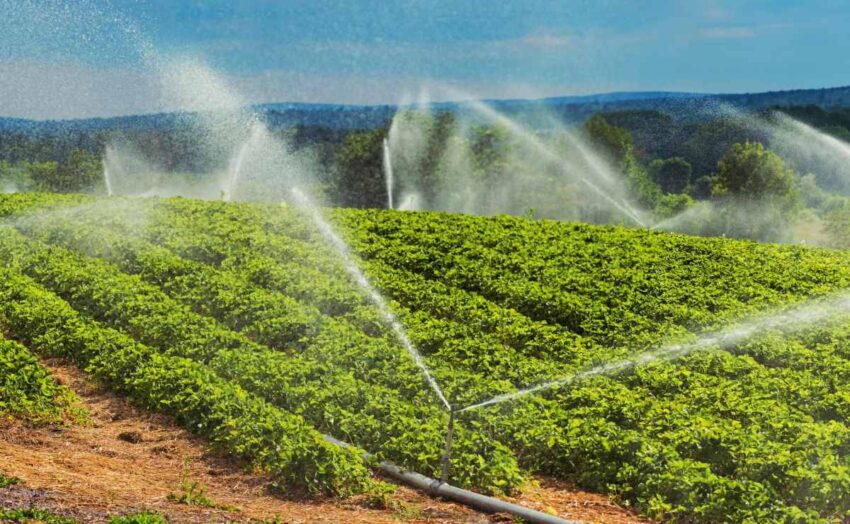
instacrops will demo its water-saving crop-boosting ai Instacrops is set to showcase its innovative AI technology aimed at significantly reducing water usage in agriculture during the upcoming TechCrunch Disrupt 2025 event.
instacrops will demo its water-saving crop-boosting ai
Introduction to Water Usage in Agriculture
Agriculture is one of the largest consumers of freshwater globally, accounting for approximately 70% of the world’s freshwater withdrawals. This staggering figure highlights the critical role that water plays in food production and the sustainability of agricultural practices. As global populations continue to rise, the demand for food increases, leading to intensified agricultural practices that further strain water resources. In many regions, especially those facing drought conditions, the challenge of managing water effectively has become a pressing issue.
Countries such as India, the United States, and parts of Africa are experiencing significant water stress, which threatens not only agricultural productivity but also food security. In response to these challenges, innovative solutions are emerging, and one such solution comes from Instacrops, a company that has pivoted towards artificial intelligence to address the water crisis in agriculture.
Instacrops: A Brief Overview
Founded with the mission to enhance agricultural efficiency, Instacrops has developed a suite of AI-driven tools designed to optimize water usage in farming. The company recognizes that traditional farming methods often lead to excessive water consumption, which is not sustainable in the long term. By leveraging advanced technology, Instacrops aims to empower farmers to make data-driven decisions that can lead to significant reductions in water usage while maintaining or even boosting crop yields.
The Technology Behind Instacrops
At the core of Instacrops’ offerings is its proprietary AI technology, which analyzes various data points related to soil health, weather patterns, and crop needs. This technology allows farmers to receive real-time insights and recommendations tailored to their specific circumstances. The AI system takes into account factors such as:
- Soil Moisture Levels: Monitoring soil moisture is crucial for determining when and how much to irrigate. Instacrops’ technology provides precise measurements, helping farmers avoid over-irrigation.
- Weather Forecasting: By integrating weather data, the AI can predict rainfall and adjust irrigation schedules accordingly, further conserving water.
- Crop Type and Growth Stage: Different crops have varying water requirements. The AI customizes recommendations based on the specific needs of the crops being cultivated.
This multifaceted approach not only helps in conserving water but also enhances overall crop health and productivity. The ability to cut water usage by up to 30% is a game-changer for farmers, particularly in regions where water scarcity is a significant concern.
Implications of Water-Saving Technology
The implications of Instacrops’ technology extend beyond individual farms. By reducing water consumption, the technology contributes to broader environmental sustainability goals. Here are some key implications:
Environmental Impact
Water scarcity is a critical issue that affects ecosystems, biodiversity, and climate resilience. By promoting water-saving practices, Instacrops contributes to the preservation of freshwater resources. This is particularly important in areas where water bodies are drying up, and ecosystems are under threat. Sustainable water management practices can lead to healthier ecosystems, which in turn support agricultural productivity.
Economic Benefits for Farmers
For farmers, the economic benefits of adopting water-saving technologies are substantial. Reduced water usage translates to lower irrigation costs, which can significantly impact a farmer’s bottom line. Additionally, by optimizing crop yields, farmers can increase their profitability. The ability to produce more with less water not only enhances food security but also positions farmers to be more competitive in the market.
Food Security and Global Challenges
As the global population is projected to reach nearly 10 billion by 2050, the challenge of feeding this growing population becomes increasingly daunting. Water scarcity is expected to exacerbate food insecurity in many regions. By adopting technologies like those offered by Instacrops, farmers can play a crucial role in ensuring food security. The ability to produce food sustainably is essential for meeting the demands of future generations.
Stakeholder Reactions
The agricultural community, including farmers, agricultural organizations, and policymakers, has shown a keen interest in the advancements made by Instacrops. Farmers who have participated in pilot programs have reported positive outcomes, including improved crop health and reduced water usage. Testimonials from these farmers highlight the practical benefits of the technology:
- Increased Efficiency: Farmers have noted that the AI recommendations allow them to allocate their resources more effectively, leading to better overall farm management.
- Enhanced Crop Yields: Many farmers have experienced increased yields as a result of more precise irrigation practices, demonstrating that water conservation does not have to come at the expense of productivity.
- Community Engagement: Farmers have expressed enthusiasm about the potential for sharing knowledge and best practices within their communities, fostering a culture of sustainability.
Policymakers are also taking notice. As governments around the world grapple with water management issues, the adoption of innovative technologies like those from Instacrops aligns with national and international sustainability goals. The potential for reducing water consumption in agriculture is a key component of many countries’ strategies to combat climate change and promote sustainable development.
Looking Ahead: The Future of Agriculture
As Instacrops prepares to demonstrate its technology at TechCrunch Disrupt 2025, the anticipation surrounding its potential impact on the agricultural sector is palpable. The event serves as a platform for innovators to showcase their solutions to pressing global challenges, and Instacrops is poised to make a significant impression.
Potential for Scaling
One of the most exciting aspects of Instacrops’ technology is its scalability. While the initial focus may be on specific regions facing acute water stress, the underlying principles of the AI technology can be adapted to various agricultural contexts worldwide. This adaptability opens the door for Instacrops to expand its reach and impact, potentially transforming agricultural practices on a global scale.
Collaboration and Partnerships
To maximize its impact, Instacrops is likely to seek partnerships with agricultural organizations, research institutions, and government agencies. Collaborative efforts can enhance the development of the technology and facilitate its adoption among farmers. By working together, stakeholders can create a more sustainable agricultural landscape that benefits both farmers and the environment.
Conclusion
Instacrops is at the forefront of a critical movement to address water scarcity in agriculture through innovative AI technology. By enabling farmers to reduce water usage by up to 30%, the company is not only helping to conserve vital resources but also enhancing agricultural productivity and food security. As the world faces increasing challenges related to water management and climate change, the solutions offered by Instacrops could play a pivotal role in shaping the future of sustainable agriculture.
Source: Original report
Was this helpful?
Last Modified: October 4, 2025 at 9:36 pm
1 views















